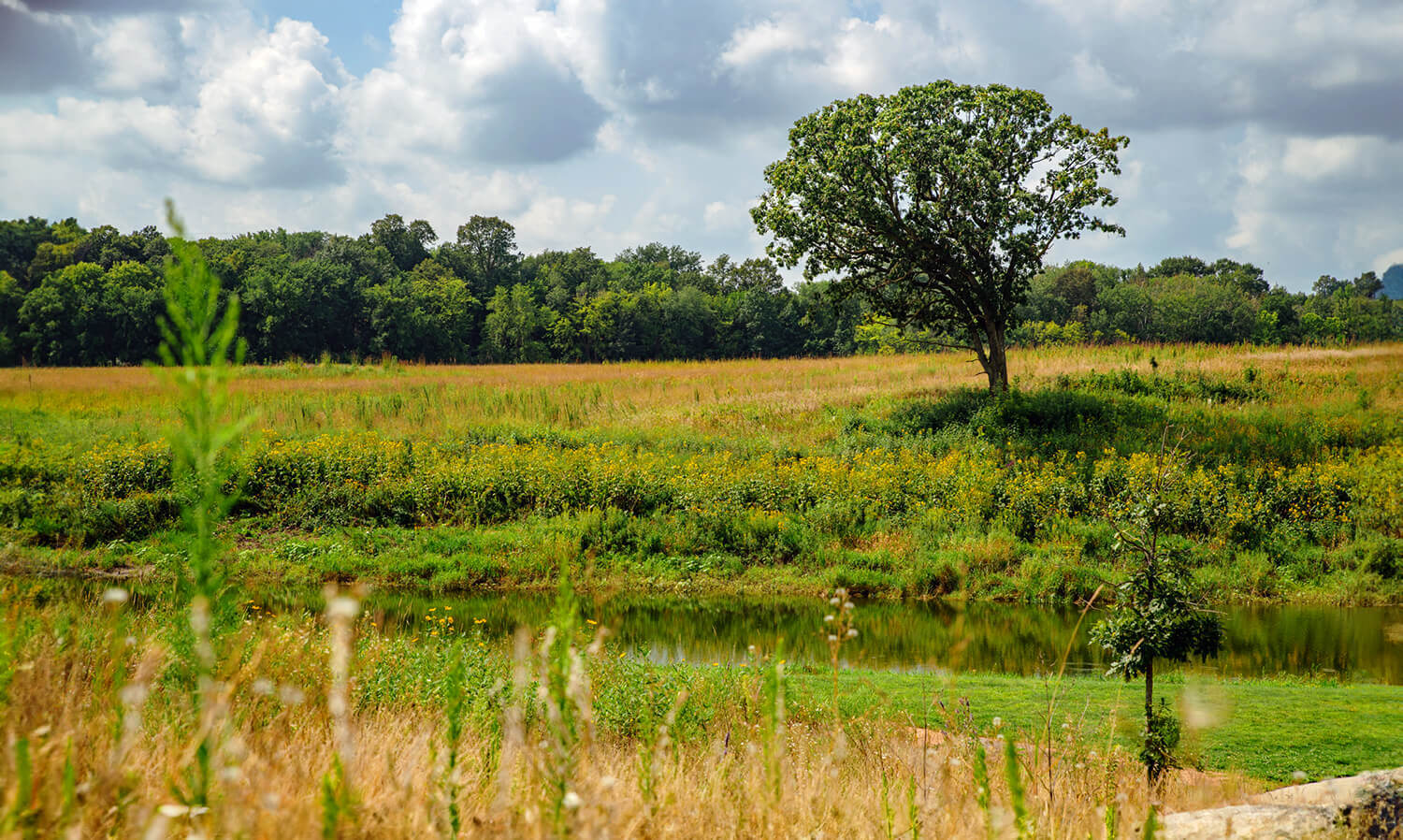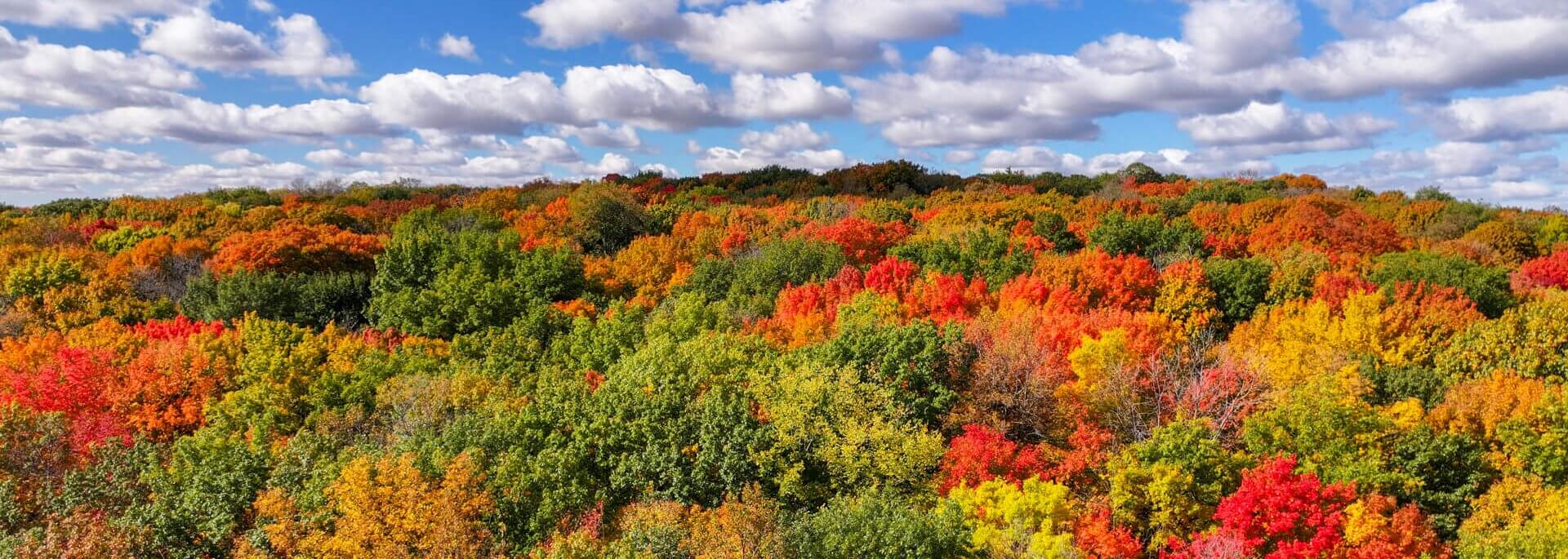The SMSC is invested in the forests and woodlands of Scott County. Big woods covered a majority of land outside of the Minnesota River valley, where the Dakota people have lived for millennia. The SMSC is dedicated to responsible environmental stewardship, investing substantial resources in ecological restoration, conservation, and sustainability efforts.

Dakota people have found immense practical and cultural value in forests. Today, diminished from what they once were, forests in Scott County continue to provide immeasurable benefits, both in terms of natural resources and ecosystem services. The SMSC continues to prioritize ecological and cultural restoration work that revitalizes traditional subsistence and cultural practices like foraging, harvesting, and gathering of waṫo (plants) for food, materials, and shelter.
Oak savannas are diverse, fire-dependent communities that have limited tree cover of different oak species, and a grass and wildflower dominated understory that is adapted to frequent fires. Historically, these fires were occasionally caused by lightning strikes, but more often caused by Indigenous people tending the fruits, nuts, and plants found in these areas. Fire was also used to keep oak savannas open to attract game species like bison, elk, and white-tailed deer.

The SMSC has restored several oak savannas around the Community by removing undesired, overgrown trees and seeding a diverse understory seed mix that attracts different wildlife including pollinators.
Since 2018, the SMSC has worked to restore several forest areas, including a 66-acre oak-basswood forest located off County Road 14, near O’Dowd Lake. When complete, this forest will house over 25,000 new trees, along with fruiting shrubs and a diverse understory.

The SMSC has also invested significant resources into the removal and reduction of common buckthorn (Rhamnus cathartica), an invasive shrub that outcompetes native plants for resources. The SMSC has worked with the University of Minnesota to research novel methods to reduce invasions including using elderberry (Sambucus spp.), a culturally important species to compete with buckthorn, and planting various native seeds to reduce reinvasion. The SMSC has also hired goats to set back buckthorn in certain areas as an eco-friendly solution. The Natural Resources department monitors plant populations to better understand the state of our forests and woodlands. This also allows staff to share their plant findings with those interested in the Community.
To get a detailed report of their forest monitoring, contact our Natural Resources Department at naturalresources@shakopeedakota.org.
